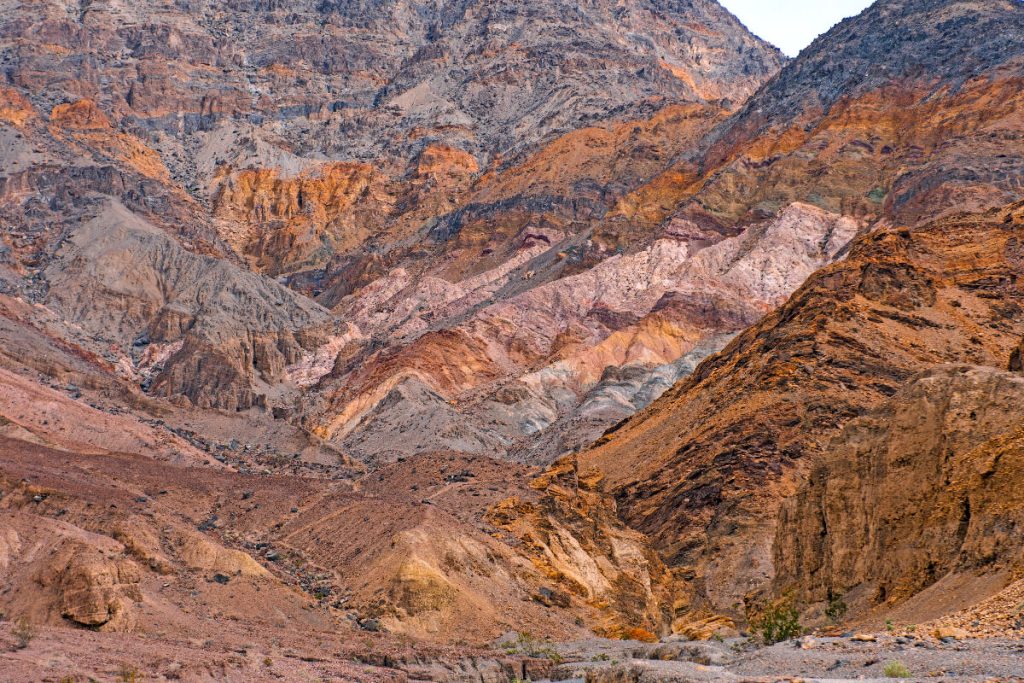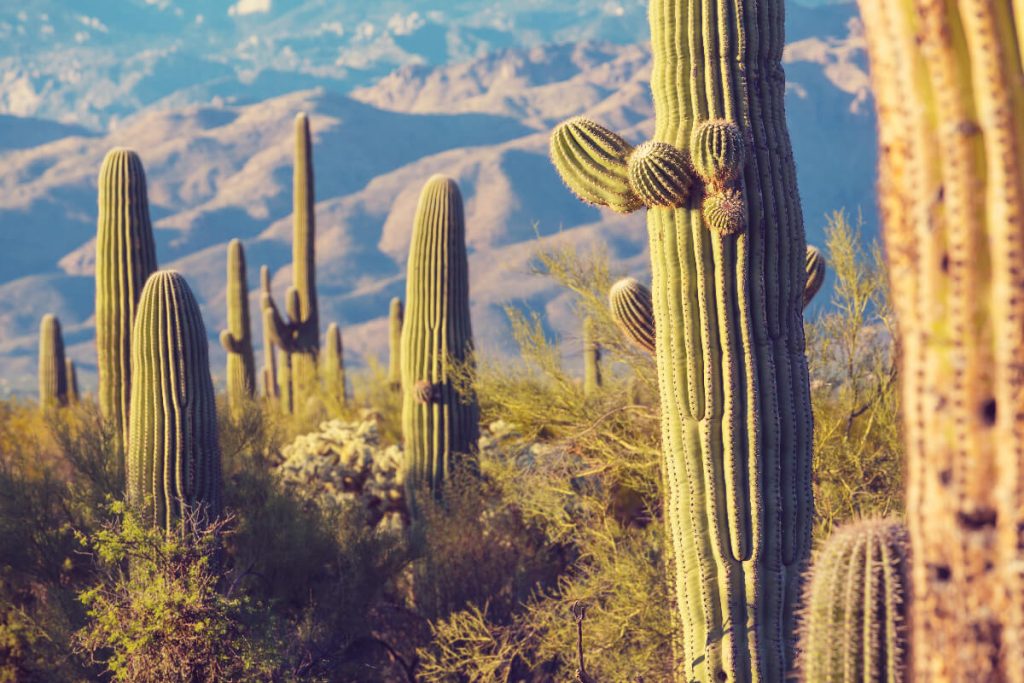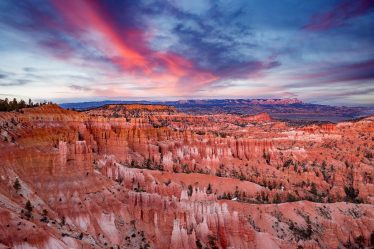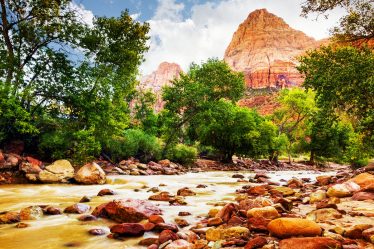
Welcome to the land of extreme beauty and danger – Death Valley in the United States. Located in southeastern California, it is one of the hottest and driest places on Earth. This region is full of contrasts, where the raw desert landscape meets surreal geological formations, and inevitable dryness is accompanied by breathtaking views. However, despite its beauty, Death Valley is also extremely hostile to human life, and its name is not accidental. Get ready for a fascinating journey through this extraordinary place, where landscape and climate create a unique experience that must be seen to be believed.
Location
Death Valley is located in the northeastern part of the American state of California and stretches about 225 kilometers east of the city of Sierra Nevada. It is part of a larger area called the Death Valley and is located within the Death Valley National Park, which is one of the most unusual and inhospitable places on Earth. Death Valley is located below sea level, making it the lowest point in North America and one of the hottest and driest places in the world. This incredible place with a unique microclimate and landscape attracts tourists from all over the world who want to taste the extreme beauty of the desert.
Weather

Death Valley is known for having one of the hottest and driest climates in the world. In fact, it is one of the warmest places on Earth. During the summer months, especially in July and August, average high temperatures in Death Valley typically reach around 46-51°C, and records can exceed 54°C. The world record for the highest temperature ever recorded, 56.7°C, was set at Furnace Creek Ranch in Death Valley, making it one of the hottest places on the planet.
However, it’s not just high temperatures that are characteristic of Death Valley – it’s also one of the driest places in North America. The average annual precipitation in Death Valley is only about 50 mm, and some years may be almost entirely without rain. This makes Death Valley a true desert, where humidity is low and water is scarce.
The climate of Death Valley is also known for rapid temperature changes during the day and night. During the hot summer days, nights can still be warm, with temperatures exceeding 32°C. In winter, especially at night, temperatures can drop below freezing, and higher areas like the Panamint Mountains can be covered in snow.
In summary, the weather in Death Valley is extreme, with hot summers, minimal precipitation, and large temperature changes. It’s a demanding environment that requires proper preparation and caution when traveling.
Short History of the Death Valley
The history of Death Valley dates back thousands of years. Originally, the area was inhabited by Native American tribes such as the Timbisha, who called it „Tumpisa” meaning „water-rock” in their language. The indigenous people of Death Valley utilized its resources, such as water from rivers and oases, and wildlife, to survive in the harsh desert environment.
In modern times, Death Valley has gained a reputation as a dangerous and inhospitable place, from which its name originates. In the 19th century, during the California gold rush, Death Valley was a difficult place to traverse for gold seekers and pioneers traveling west. In 1849, a group of gold seekers who became stranded in Death Valley during the summer experienced tragedy, and only a few survived, contributing to the naming of the place „Death Valley.”
With the development of transportation and tourism in the 19th and 20th centuries, Death Valley began to attract the attention of adventurers, explorers, and artists. Well-known explorers such as John Muir and John Wesley Powell visited Death Valley, documenting its unique landscape and extreme conditions. In the interwar period, Death Valley also became a place where temperature records were attempted to be broken, contributing to its international fame.
Today, Death Valley is one of the most popular national parks in the United States, attracting tourists from all over the world with its remarkable scenery and climate. It is also a place of scientific research that helps to understand the unique biology, geology, and climate of this extraordinary area. Despite its unique character and challenges associated with its extreme environment, Death Valley remains a fascinating travel destination for those who want to discover the wonder of nature in its most raw form.
Fun Facts
Here are some interesting facts about Death Valley in the United States:
- Lowest point in North America: Death Valley lies at sea level, and its lowest point, known as Badwater Basin, is considered the lowest point in North America, sitting 86 meters below sea level.
- Extreme temperatures: Death Valley is known for its extreme temperatures. The highest temperature ever recorded on Earth was registered in Furnace Creek Ranch in Death Valley on July 10, 1913, reaching a scorching 56.7°C.
- Unique flora and fauna: Despite the harsh climate, Death Valley is home to many unique species of plants and animals that have adapted to the extreme desert conditions. You can find cacti, lizards, scorpions, and rare fish species living in thermal waters.
- Beautiful geological formations: Death Valley is known for its extraordinary geological formations, such as Zabriskie Point, Devil’s Golf Course, and Artist’s Palette. These colorful hills, sand dunes, and salt crystals create amazing landscapes that attract photographers and artists from around the world.
- Film location: Death Valley has been used as a filming location for many famous movies, such as „Star Wars,” „Mad Max: Fury Road,” and „The Treasure of the Sierra Madre.”
- Native American cultural trails: Death Valley is also rich in cultural trails left by the Timbisha tribes who inhabited the area for thousands of years, such as petroglyphs and other signs of their culture.
- „Flower Bloom” phenomenon: Every so often, Death Valley experiences a spectacular event known as „Flower Bloom.” After spring rains, the desert sand blooms and is covered with colorful flowers, creating a beautiful and rare sight.
These facts are just the tip of the iceberg when it comes to the fascinating and unique character of Death Valley. This desert area offers breathtaking landscapes and natural wonders that are worth exploring.
If you are interested in hiking you may also see Bryce Canyon.
Fauna of Death Valley

The fauna of Death Valley is perfectly adapted to the extreme conditions of life in the desert. Here are some interesting animal species that can be found in this region:
- California Kingsnakes: These snakes are well adapted to survive in the desert. They have a sand-yellow coloration that blends perfectly with the sand of Death Valley. They are known to be able to survive without water for a long time.
- Scorpions: Death Valley is home to different species of scorpions, such as the coral scorpion or the black-tailed scorpion. Despite their menacing appearance, some of them are relatively non-venomous and do not pose a threat to humans.
- Lizards: In Death Valley, one can find many species of lizards, such as the horned lizard or the desert iguana. They are excellently adapted to harsh climatic conditions, possessing the ability to regulate their body temperature in extreme temperatures.
- Birds of prey: Death Valley is home to different species of birds of prey, such as the golden eagle, the desert hawk, and the elf owl. These birds are well adapted to hunting in the desert, where they catch their prey, such as rodents or lizards.
- Cactus Wren: This small bird is the only species of bird in North America that specializes in eating cactus seeds. It is well adapted to desert conditions and can survive without water for a long time.
- Pupfish: In Death Valley, one can find unique species of pupfish, such as the Death Valley pupfish or the Ash Meadows pupfish. These are small fish that have adapted to living in warm and saline thermal waters of Death Valley.
These are just a few examples of the fascinating fauna of Death Valley. It is worth paying attention to these unique animals while exploring this extraordinary region. However, it is important to remember to respect their natural environment and follow environmental conservation guidelines when visiting Death Valley.
Flora in Death Valley

The flora of the Death Valley, despite the harsh climate conditions, is surprisingly diverse and adapted to the extreme desert conditions. Here are a few interesting facts about the plants of the Death Valley:
- Cacti: The Death Valley is known for the presence of different species of cacti, such as the columnar cactus, the spiny cactus, and the fiery cactus. They are perfectly adapted to the harsh climate characterized by extremely high temperatures, low amounts of water, and intense sunlight.
- Shrubs: In the Death Valley, one can find various species of shrubs, such as the honey mesquite, the creosote bush, and the saltbush. They are adapted to survive in low-moisture conditions and extreme temperatures.
- Grasses: Despite the harsh desert conditions, the Death Valley is home to species of grasses, such as the California reed grass and the tumbleweed. They are well adapted to survive in the sandy and salty soils of the Death Valley.
- Salt-tolerant plants: The Death Valley is also a well-known place for salt-tolerant plants, such as the saltbush or the salt-marsh fleabane. They are adapted to live in soils rich in salt and in saline waters, which are common in the Death Valley.
- Thermal plants: The Death Valley also has thermal springs around which unique plants grow, such as the palm reed or the bulbous bluegrass. These plants have adapted to the specific thermal conditions present in this region.
- Endemic plants: The Death Valley is also home to several species of endemic plants, which means they only occur in this specific region. Examples include the oval-fruited bladderpod and the desert yucca.
The vegetation of the Death Valley is incredibly unique and fascinating, adapted to the extreme climate conditions of this region. When exploring the this place, it’s worth paying attention to the diversity of vegetation and enjoying this incredible variety of desert flora. However, it’s important to remember to preserve and respect the environment.
When to visit Death Valley?
Death Valley is a place with an extreme climate, so it’s important to choose the right time of year to enjoy a comfortable and safe stay. Here is some information about when is the best time to visit:
Spring (March-May): Spring is one of the best times to visit here. During this time, temperatures start to become milder, usually ranging around 20-30 degrees Celsius. Desert vegetation comes to life, cacti and shrubs bloom, creating stunning landscapes. It’s also a time when there are fewer tourists, allowing for a more peaceful visit.
Fall (September-November): Fall is also a convenient time to visit, especially in September and November. Temperatures start to drop after the hot summer, making the visit more comfortable. Fall is also a time when there are fewer tourists, especially after the holiday season, which helps to avoid crowds.
Winter (December-February): Winter in Death Valley can be harsh, with low temperatures at night and often dropping below freezing. However, if you’re prepared for colder conditions, winter can be a fascinating time to visit this place. During this time, you can admire the contrast between the white snow on the mountains and the warm colors of the deserts. However, it’s important to bring appropriate clothing and plan your visit to less accessible areas.
Summer (June-August): Summer in Death Valley is an extremely hot period, with temperatures often exceeding 40 degrees Celsius. This is a time when extreme weather conditions can be dangerous, especially for those unaccustomed to such temperatures. If you plan to visit during the summer, it’s essential to prepare accordingly, such as wearing light and breathable clothing, drinking plenty of water, and avoiding the hottest hours of the day.
In summary, the best time to visit Death Valley depends on personal preferences and tolerance for extreme weather conditions. Spring and fall are usually the mildest.



